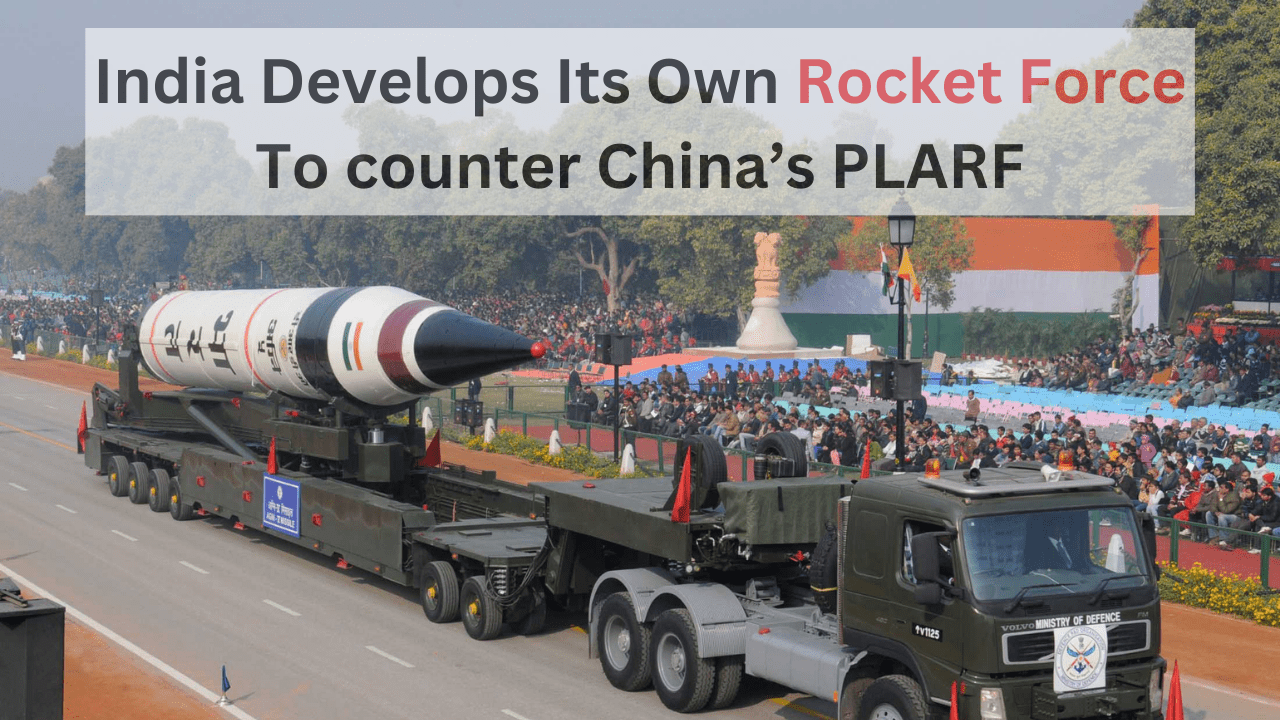India’s Rocket Force: India’s strategic defence landscape is evolving rapidly as it moves to establish its own Rocket Force, mirroring China’s People’s Liberation Army Rocket Force (PLARF). This development comes amidst heightened tensions in the Indian Ocean Region, with India aiming to counter Beijing’s asymmetric advantage.

Underwater warfare dynamics are intensifying, with India announcing plans to test a 500 km range submarine-launched cruise missile (SLCM) in response to regional advancements. The move underscores India’s strategic imperatives in light of China’s expanding naval presence and Pakistan’s progress in missile technology.
Driven by strategic concerns, India’s SLCM program seeks to enhance its defence capabilities, particularly in light of China’s growing influence in the Indian Ocean. The envisioned Rocket Force is integral to India’s defence strategy, with former Chief of Defence Staff General Bipin Rawat outlining the importance of operationalizing theatre commands.
Deployment of SLCMs will augment India’s existing rocket force, with plans to integrate them into submarines constructed under Project 75I. Competing bids from German ThyssenKrupp AG and Spanish Navantia highlight the global interest in India’s defence modernization efforts.
India’s strategic vision extends to enhancing the range of SLCMs to 800 kilometres, covering key Chinese cities like Shanghai and Hangzhou. This expansion underscores India’s commitment to bolstering its deterrence capabilities in the face of regional challenges.
The SLCM trials conducted in February 2023 demonstrated successful achievements within a range of 402 kilometres, marking a significant milestone in India’s defence preparedness. With variants tailored for land attack and anti-ship operations, SLCMs offer versatile options for naval operations.
Domestic collaboration with Indian industries such as Larsen and Toubro, Godrej, and Sameer underscores India’s self-reliance in defence technology development. These partnerships are crucial in advancing India’s indigenous defence capabilities and reducing dependency on foreign suppliers.
SLCMs play a pivotal role in India’s defence strategy, offering precision strike capabilities against both land-based targets and naval assets. Their deployment on submarines enhances stealth capabilities, providing a formidable response to potential threats.
India’s defence roadmap also includes the development of long-range land attack cruise missiles with a range of 1500 kilometres, further expanding its strategic reach. Coastal batteries armed with anti-ship cruise missiles contribute to India’s comprehensive defence architecture in the Andaman and Nicobar Islands.
Despite progress, India faces challenges in closing the capability gap with China’s PLA Rocket Force. However, strategic initiatives like the Rocket Force and advancements in missile technology signal India’s commitment to safeguarding its national interests in the Indo-Pacific region.
As India fortifies its defence posture, regional dynamics are undergoing significant shifts. The development of SLCMs underscores India’s resolve to assert itself as a formidable maritime power, ensuring stability and security in the Indian Ocean Region.
India’s SLCM Against Pakistan’s Babur
Pakistan’s successful test of the Babur III SLCM poses challenges for India’s strategic calculus. The Babur III’s capabilities, including its range and propulsion systems, enhance Pakistan’s second-strike capability, altering the regional security landscape.
India’s response to Pakistan’s SLCM developments underscores the complexities of regional deterrence dynamics. By bolstering its own defence capabilities, India aims to maintain strategic parity and stability in the Indo-Pacific region.
India Levels Up Underwater Game
Amidst China’s assertive naval expansion, India’s submarine capabilities remain critical in ensuring maritime security. While challenges persist, India’s defence modernization efforts signal its commitment to enhancing its naval prowess and safeguarding its maritime interests.
